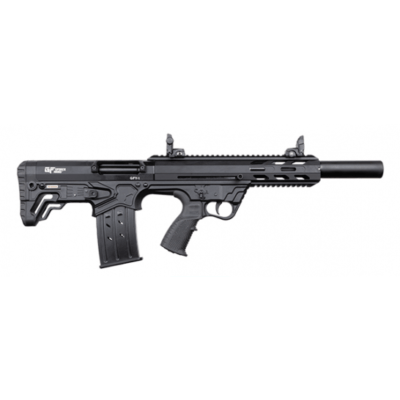

Shotguns come in a wide variety of forms, from very small up to massive punt guns, and in nearly every type of firearm operating mechanism.

The military value of shotguns was rediscovered in the First World War, when American forces used the pump-action Winchester Model 1897s in trench fighting to great effect. But by the late 19th century, these weapons became largely replaced on the battlefield by breechloading rifled firearms shooting spin-stabilized cylindro-conoidal bullets, which were far more accurate with longer effective ranges. Shotguns were often favored by cavalry troops in the early to mid-19th century because of its ease of use and generally good effectiveness on the move, as well as by coachmen for its substantial power. The muzzleloading blunderbuss, the direct ancestor of the shotgun, was also used in similar roles from self-defense to riot control. Preceding smoothbore firearms (such as the musket) were widely used by armies in the 18th century. Although revolving shotguns did exist, most modern repeating shotguns are either pump-action or semi-automatic, and also fully automatic, lever-action or bolt-action to a lesser extent.

For non-repeating designs, over-and-under and side-by-side break action shotguns are by far the most common variants. Like rifles, shotguns also come in a range of different action types, both single-shot and repeating.

Almost all are breechloading, and can be single-barreled, double-barreled, or in the form of a combination gun. Shotguns come in a wide variety of calibers and gauges ranging from 5.5 mm (.22 inch) to up to 5 cm (2.0 in), though the 12-gauge (18.53 mm or 0.729 in) and 20-gauge (15.63 mm or 0.615 in) bores are by far the most common. Shotguns are most commonly smoothbore firearms, meaning that their gun barrels have no rifling on the inner wall, but rifled barrels for shooting slugs ( slug barrels) are also available. JSTOR ( October 2018) ( Learn how and when to remove this template message)Ī shotgun (also known as a scattergun, or historically as a fowling piece) is a long-barreled firearm designed to shoot a straight-walled cartridge known as a shotshell, which usually discharges numerous small pellet-like spherical sub- projectiles called shot, or sometimes a single solid projectile called a slug.Unsourced material may be challenged and removed. Please help improve this article by adding citations to reliable sources. This article needs additional citations for verification.


 0 kommentar(er)
0 kommentar(er)
